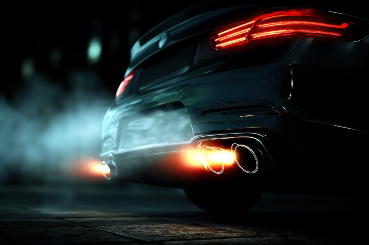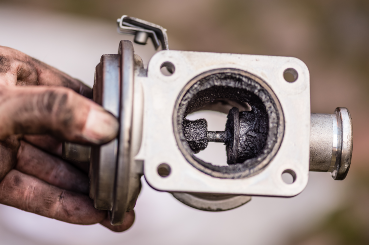With the engine and fuel technology that goes into cars these days, you can be forgiven for feeling a little bamboozled when it comes to knowing your automotive acronyms and tech brandings.
Some may think that acronyms such as TDi, CDTi and TDCi are shared across the industry, but look a little closer and find that these tend to be manufacturer-specific.
Let’s get into the thick of it…
TDi, TSi & TFSi – the VW family
If you’ve ever bought a Volkswagen, Audi, SEAT or another brand from the huge range of manufacturers underneath the VW umbrella, there’s a good chance you’ve noticed one of three core fuel-related acronyms.
What does TDi stand for?
- Contrary to common belief, these three letters actually stand for ‘Turbocharged Direct Injection’, meaning the engine is a turbocharged diesel unit. This technology has been developed to help your car enhance its fuel economy, reduce emissions and have longer service intervals.
What does TSi stand for?
- Bit of a weird one, this, as TSi stands for ‘Turbo Stratified Injection’, AKA a turbocharged petrol engine. This is an evolution of the TFSi range of engines, improving upon the previous technology to again enhance those key requirements you want from a modern powerplant, as well as offering a bit of a performance boost thanks to that turbo.
What does TFSi stand for?
- As just touched on, TFSi is an older generation of engine technology from the VW group, now improved in TSi form. Those four letters stand for ‘Turbo Fuel Stratified Injection’.

Ford EcoBoost and EcoBlue
Let’s start with Ford’s EcoBoost petrol tech first, and we’ll begin with a stat: the 1.0-litre EcoBoost powerplant has won (at time of publishing) 10 International Engine of the Year awards, including overall winner three times.
So why all the acclaim? Well, it’s largely because Ford has managed to combine the likes of great fuel economy, low emissions and very useable performance from such small engines. For example, the three-cylinder 1.0-litre unit can deliver up to 140ps (138-ish bhp), which used to only be viable through a bigger 1.6-litre powerplant.
Such things are achievable through, once again, direct injection, where the fuel enters the combustion chamber in a highly pressurised manner. This enables the engine to require only the bare minimum amount of fuel without hindering performance.

Ford’s EcoBoost technology can be found across most of its range, including the latest Fiesta & Focus ST models, and even the GT supercar.
EcoBlue is effectively to diesel what EcoBoost is to Ford’s petrol engine range. The goal was to ensure this option complies with the stringent Euro6 emissions standards, where a 55% reduction of nitrogen oxide (NOx) was required – a goal which was very much met.
On older Ford diesel engines, you’ll likely notice the acronym ‘TDCi’ – what does this stand for?
- TDCi stands for ‘Turbo Diesel Common-rail Injection’
Honda and its VTEC technology
You’ll find many a car enthusiast who gets quite excited at the mention of Honda’s now famed VTEC engine tech.
Expanding out those four letters can actually make things more confusing for the laymen; VTEC stands for ‘Variable Valve Timing & Lift Electric Control’.
Anyone else none-the-wiser? Well, a bit of background knowledge first – in Japan, there is a tax levied on engine displacement (how big they are), so manufacturers based there have been coming up with concepts for years of how to get the best performance from smaller engines.
Forced induction from the likes of turbocharging and even supercharging has been well explored and the former remains a viable option. Meanwhile, other names such as Mazda and Honda have tried more leftfield options; the former is known for its rotary technology, while Honda continues to impress many with VTEC.

So, back to the point at hand; put ‘simply’, VTEC technology enables Honda to offer manageable performance through valve timing which is optimised for both low and high RPM activity.
Going into more detail, this sees the cam lift to a necessary height to give the car either better economy or performance; at low RPM, the cam lift is limited to use less fuel, while at higher RPM, the cam lifts higher and for a longer time to allow more air in, resulting in a faster working engine due to the additional pressure.
So, if you ever hear the term ‘the VTEC is kicking in’, that’s what is happening under the bonnet.
Mazda Skyactiv Technology
Now, this is a bit different to other car manufacturers, as Mazda’s Skyactiv know-how doesn’t limit itself to just what’s under the bonnet – it looks at the car as a whole.
Firstly, it looks at the vehicle architecture, ensuring it is as lightweight as possible while remaining strong and safe; Mazda also likes to keep things agile in this area, helping its cars boast that great driving experience.
Then in comes factors such as engine and transmission; with the former, Mazda looks to keep its powerplants cleaner, more responsive and economic.

Skyactiv-X is the Japanese firm’s latest evolution of this mantra, offering up to 20% less fuel consumption and making for the first consumer petrol engine with Spark Controlled Compression Ignition (SPCCI). This concept combines the best of both petrol and diesel engines for a direct and smooth response, coupled with plenty of useable torque.
Elsewhere in the Mazda range, you’ll find Skyactiv-G (petrol) and Skyactiv-D (diesel).
Other engine acronyms and terms…
What does dCi stand for?
- This stands for ‘Direct Common-rail Injection’, and you’ll find it on diesel examples of cars from Nissan, Renault & Dacia
What is DiG-T on a Nissan?
- This means the Nissan in question is a petrol-powered car, with it standing for Direct Injection Gasoline Turbocharged
Why would I be seeing PureTech or BlueHDi on my car?
- The likelihood is that your car is a Citroen or a Peugeot; they represent the petrol and diesel versions of the two’s vehicles respectively
What is Fiat Multijet?
- Multijet is Fiat’s branding for its diesel-powered cars
Is CDi diesel, too?
- It is, and you’ll find it on a Mercedes, most likely – it stands for ‘Common-rail Diesel Injection’
My Kia has GDi on it – what does this mean?
- This means your Kia is petrol-powered (which you likely knew already), and stands for Gasoline Direct Injection – diesel Kia models will be found with the acronym CRDi (Common-rail Diesel Injection)
- The same two designations are also found on cars from Kia’s partner Hyundai
What is Alfa Romeo’s diesel branding?
- On diesel Alfas, you’ll likely find the four letters of JTDM, or uni-Jet Turbo Diesel modificata
Suzuki Dualjet?
- That will be the Japanese manufacturer’s range of petrol engines



















